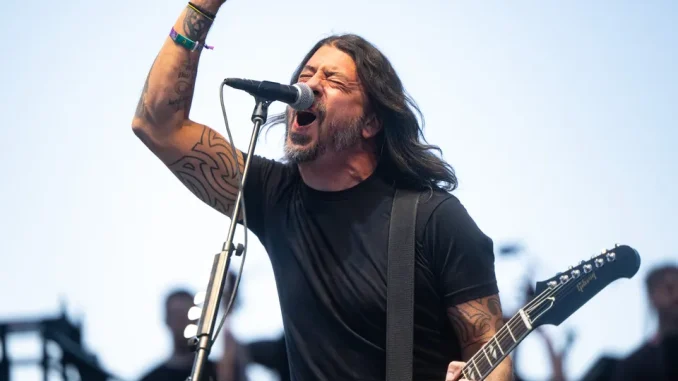
Foo Fighters have always been a band defined by resilience. Now, nearly three decades into their career, and three years after the devastating loss of drummer Taylor Hawkins, they’ve released their first new single in two years: “Today’s Song.”

The track, unveiled on July 2, 2025, arrives as a poignant declaration of renewal, marking the band’s first original material since 2023’s But Here We Are. Its timing couldn’t be more symbolic, coinciding with the 30th anniversary of the Foo Fighters’ 1995 debut album, the moment Dave Grohl transformed grief into rebirth for the first time.
The Meaning Behind “Today’s Song”
From its opening moments, “Today’s Song” feels like a conversation between past and present. Grohl’s voice enters low and restrained, almost weary, before the band’s full weight crashes in, a familiar Foo Fighters surge of cathartic guitars and layered harmonies.
“I’ve seen the sun come up a thousand times / But never quite like today,” Grohl sings, his delivery trembling between exhaustion and hope.
Lyrically, the song explores perseverance and acceptance, themes the band has carried since But Here We Are, but this time there’s less mourning and more movement. The tone suggests not just surviving tragedy, but choosing to live forward.
A Moment Of Transition
The release of “Today’s Song” comes amid major change for Foo Fighters. Earlier this year, longtime session drummer Josh Freese departed the group following two years of touring. His replacement, Ilan Rubin, known for his work with Nine Inch Nails and Angels & Airwaves, joined just in time to help shape the band’s evolving sound.
Although the band has yet to confirm full personnel credits, the track’s crisp and powerful percussion strongly hints at Rubin’s presence. Fans have praised the single’s drumming for blending Freese’s precision with the raw punch that defined Taylor Hawkins’ legacy.
The single’s cover art, created by Grohl’s daughter Harper, adds another emotional layer, a quiet nod to the family ties and continuity that have long grounded the Foo Fighters’ universe.
A Sound Both Familiar And Forward Looking
Musically, “Today’s Song” sits at the intersection of the band’s melodic anthems and their more reflective side. Its opening chords echo Times Like These, but its build recalls the driving intensity of The Pretender. Producer Greg Kurstin, who also helmed But Here We Are, keeps the sound wide and organic, every cymbal crash feels like a heartbeat.
The chorus lands like a mantra: an invitation to live in the moment despite everything that’s come before.
“Today’s the song we sing to stay alive,” Grohl howls, and for a few seconds, it’s as if the band’s entire history converges into that single line.
Fans And Critics Respond
Reactions were swift and emotional.
Pitchfork called the track “a bittersweet rallying cry, hopeful, heavy, and unmistakably Foo Fighters.”
Billboard praised its “balance of introspection and uplift,” while The Guardian described it as “a reclamation of joy from the weight of loss.”
Across social media, fans flooded comment sections with messages of gratitude, with one user writing:
“It feels like they’re finally breathing again. And somehow, so are we.”
Looking Ahead
With “Today’s Song”, Foo Fighters aren’t just marking an anniversary, they’re reaffirming their identity. Three decades after Grohl recorded his first demos alone in a Seattle basement, the band continues to evolve while staying fiercely human.
Industry insiders suggest the single may precede a new studio album in 2026, though no official details have been confirmed. What’s clear is that “Today’s Song” represents both an ending and a beginning, a bridge between memory and motion.
Final Thoughts
Foo Fighters have built their legacy on defiance, turning tragedy into art, exhaustion into energy, and noise into something that feels like healing.
“Today’s Song” captures all of that: the pain, the persistence, and the quiet decision to keep going. It’s not just another single, it’s a statement of purpose, three decades in the making.
Leave a Reply